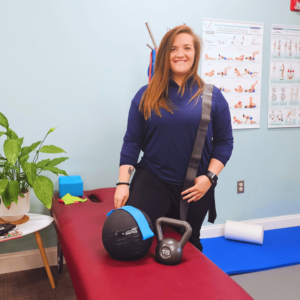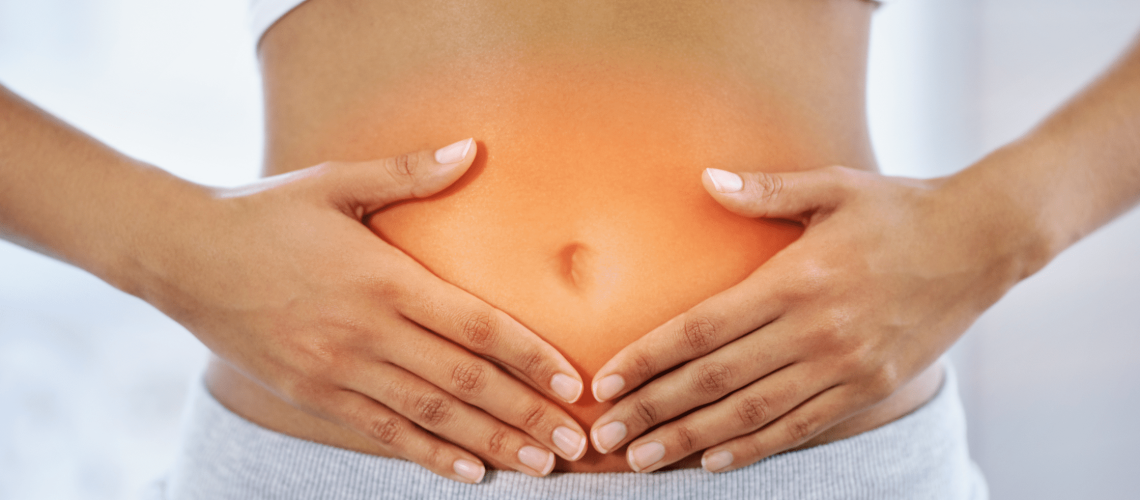The connection between the gut and pain is a powerful example of how different systems in the body influence one another. This relationship, often referred to as the gut-brain-muscle axis, helps explain why gastrointestinal (GI) issues can lead to pain in areas like the back, ribs, and even shoulders.
Here’s how they’re connected:
Shared Nerve Pathways
The gut and spine are connected by the vagus nerve and other shared nerve networks. When inflammation or irritation occurs in the gut, it can send pain signals through these nerves, creating discomfort in other areas of the body, such as the back or ribs. This is known as referred pain.
Inflammation and Systemic Effects
Gut inflammation, caused by conditions like irritable bowel syndrome (IBS), food sensitivities, or gut dysbiosis (an imbalance in gut bacteria), doesn’t stay isolated. It can trigger a cascade of immune responses that lead to systemic inflammation, contributing to muscle tension, joint discomfort, and chronic pain in areas like the back or shoulders.
Muscle Tension from Protective Mechanisms
When the gut is irritated, the body often reacts with protective mechanisms, including tensing nearby muscles. This can lead to stiffness and pain in areas like the lower back, where these muscles work overtime to compensate for discomfort.
Stress and the Gut-Pain Connection
The gut is closely tied to emotional and physical stress through the gut-brain axis. Chronic stress can worsen gut health, leading to pain and tension throughout the body. Conversely, physical pain can increase stress, perpetuating the cycle.
Postural Changes and Pain
GI discomfort can alter how you sit, stand, or move, leading to poor posture and compensations that strain your back and shoulders over time.
By addressing gut health through proper nutrition, mobility, strength exercises, stress management, and treatments that reduce inflammation, you can break the cycle of gut-related pain and help your body heal and function more efficiently.
Mobility and Strength Exercises for Your Gut
Mobility and strength exercises can significantly help with GI-related back pain by addressing the muscle imbalances, postural compensations, and movement limitations often resulting from abdominal discomfort. Here’s how they work:
- Improving Posture, Balance, and Core Function – GI discomfort often causes people to adopt protective postures, like hunching forward or twisting slightly to relieve pressure. Over time, these changes strain the back and surrounding muscles. Mobility exercises help reduce unnecessary tension in the back and ribcage.
- Easing Muscle Tension and Spasms – When the abdomen is inflamed, nearby muscles in the back and core can tighten up to “guard” the area. Gentle mobility exercises loosen these tight muscles, while strength exercises stabilize the core, preventing overcompensation by the back muscles.
- Supporting the Core and Diaphragm Function – A strong, functional core can better support your spine and ribs, reducing strain on the back muscles. Breathing exercises that strengthen the diaphragm also improve core stability and enhance digestion, reducing tension related to abdominal inflammation.
- Stimulating Circulation and Healing – Movement increases blood flow, which helps reduce inflammation in the abdomen and surrounding muscles. This improved circulation supports healing and may lessen nerve irritation that causes referred pain in the back.
- Promoting Gut Health Through Stress Reduction – Chronic stress can exacerbate both GI issues and back pain. Exercise reduces stress hormones, improving digestion and reducing the cycle of tension and inflammation.
Addressing the root causes of muscle imbalances and promoting overall body function, mobility, and strength exercises can break the connection between GI inflammation and back pain, helping you move and feel better.





